This essay’s title is inspired by the lyrics of Peg Leg Howell’s “Rock and Gravel Blues” when he sings:
“Let’s go to the river and sit down
Honey, let’s go to the river and sit down
If the blues overtake us, jump overboard and drown”.
The song was recorded at 20th April 1928 in Atlanta by Columbia, with “Low-Down Rounder Blues” at the B-side. As with most other Howell songs, it marks a transition from the older generation songs, work songs and ballads to the blues, containing lyrics of which the origins are, to say the least, very confused (Oliver, 1969). Though the other lines do not repeat it, this first part of the song seems to infer that “‘jumping overboard and drowning“, thus suicide, might be an option when “the blues” gets too much.
The suicide topic is only marginally a subject in blues literature, and I put it down on no more than coincidence that it came to my attention. In fact, I was perusing documents to illustrate the roots of (some) early blues lyrics and idioms in the experience of African-Americans during slavery. During this investigation, I remembered, for instance, having encountered some time ago a hint that the blues classic “Shake ‘em On Down” might have its historical roots in a practice by planters, who inspected occasionally the slave male’s genitals on the auction block before striking a bargain. So far, I have not been able to retrace the references to this hint, but I will surely take up the thread again. Early blues is so much more than music; it is a language, a form of speech with an own vocabulary that reverberates the events and circumstances which are considered as relevant. The richness of words and their often subtle shades of different meanings tell us what their users judge important and how they look upon the subject of their talk. If we can assume that, contrary to modern times, changes in vocabulary were then rather slow to develop, it must be possible to detect in early blues lyrics the traces of the past when blacks were still in shackles.
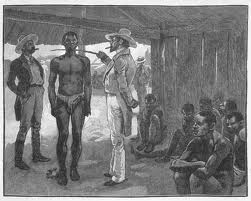 The auction block, however, froze my attention and inspired me to make a step aside in my first preoccupation. Few other events than the selling at the auction block, and the whole of actions around it, symbolizes more, I believe, the monstrousness and atrocity of slavery. I was severely shocked by some extant documents which narrate practices hardly of human nature. To quote only one example (A.A. Davis, 2010):
The auction block, however, froze my attention and inspired me to make a step aside in my first preoccupation. Few other events than the selling at the auction block, and the whole of actions around it, symbolizes more, I believe, the monstrousness and atrocity of slavery. I was severely shocked by some extant documents which narrate practices hardly of human nature. To quote only one example (A.A. Davis, 2010):
“As these slaves were auctioned, the potential buyers would inspect the slaves, to that liken the inspection methods when purchasing livestock. These methods would be humiliating to any human being. Such as, having a slave bend over and the potential buyer would probe the slave’s rectum with an object (such as a stick), the women’s rectums and vaginas ere also probed. These inspections were performed in an open forum, from an elevated platform called the “auction block”, while the potential buyers, general public and other slaves looked on.”
Many documents, not unsurprisingly, mention suicide and other desperate actions in this context of brutality. In the words of E. M. Stanton Ingram (2004 ): “When a slave could no longer bear his oppressor’s brutal treatment, he committed suicide or ran away. And to avoid the auction block, slaves chopped off fingers and toes, or feigned illness on the auction block, and when he saw his children shackled in chains, taken away to be sold, he killed them. Out of desperation, slaves consumed drugs that caused vomiting, miscarriages, and ate dirt that eventually led to death.” Piersen (1977) corroborates this when he contends that suicide was very common among the slaves when they were captured, and immediately upon arrival in America. From our present day perspective, few of us would have difficulties to find suicide unjustified or incomprehensible in that context, and contemporary documents suggest that a similar acceptance existed among the fellow slaves.
Impulsively, the question popped up in my mind: “What about blues and suicide?” If (early) blues translated the way that the African-American populace coped with the failure of the post war Emancipation, and with the harsh and humiliating effects of a legalized segregation, can we then find traces in the early blues lyrics of suicide as a possible escape from the different ways whites contrived to keep African-Americans at a subservient level? Was suicide conceived as a way out? From this, it is only a small step to a next question, which many, less familiar with the meaning and background of the blues, will be inclined to ask: Is blues music in itself not conducive to suicide? In a common, lay person conception: does blues not refer to an intense emotional state of sadness? Is blues, with its focus on being out of work, broke, hungry, a long ways from home without a ticket to go back, being left by a woman, in itself not a trigger for despair? Blues music is said to thrive mainly when life is hard and disappointing. So, at first view, it does not seem unreasonable to see a correlation between suicide and blues. Is after all, the word “blues” not part of the Anglo-Saxon vocabulary where it is a synonym for melancholy, for unhappy moodiness?
When I told my wife I planned to explore the possible association between suicide and blues, she left no doubt that my exploration would be at my own risk and peril: “if you find that blues music leads to a higher suicide risk, I don’t want to hear no more blues in this house!”. I was thus warned unambiguously; I was pretty confident, however, as what would be the nature of my conclusion. Be confident: blues music is still played at my place, from “can to can’t”.
Yet, at first glance, one might name a few reasons why it is not that unlikely that “when the blues overtake you” one would “jump overboard”. The reasons can be drawn from: (a) general African cultural elements pertaining to the concept of death and the hereafter, (b) historical observations on the incidence of suicide among slaves, (c) the potentially suicide conducive social conditions present at the time when the first blues emerged, and finally, (d) the social position of the early blues artist.
(a) In the African concept of life, the ancestors play an essential role in the communal life since they are not cut off from the living. They may still show themselves in dreams, appear to the living relatives to guide and correct them (Offiong Asuquo, 2011). They remain just around the corner, and through ritual dancing their spirits can be made to come down and take their place among the living. Life does not stop with death, that is a part of a larger cosmos, a continuum or dynamic process involving the increase or decrease of the “life force”. When a person dies, in our Western terminology, it does not alter or end the life of a person in the African belief. It merely changes his/her conditions. In African culture ancestors continue to communicate with their families (Allan Anderson, 2008).
From this belief system, one might be tempted to conclude that death does not deter, which would theoretically lower the threshold for taking ones own life. This supposition is consistent with Freud’s theory that, unconsciously, many people who take the decision to step out of life, believe they don’t really die.
(b) Multiple documents suggest that suicide was not exceptional among the Africans that were brought to slavery in the British colonies.
Already during the Middle Passage Africans recurred to self-inflicted death as a way out of the infernal (or, “hideous”, to use Leroi Jones’ words) cargo conditions and the fear of what awaited them once ashore. “Of the millions of Africans who endured the Middle Passage, many did not live to reach American shores. Disease, dehydration, abuse and suicide contributed significantly to what scholars believe to be high mortality rates aboard slave ships.” (T. Fialola, A. Warnock, xxii). There is evidence that slaves were shackled in pairs to prevent not only violent retribution against their captors, but also mass suicide. Contributing to the readiness to suicide was, next to the awful shipboard conditions, their belief that once dead, they would return to their homeland. Death was the quickest way back home, and to paradise. The myth that whites were cannibals, that they cooked Africans, ate their flesh after removing their eyes, and drank their blood only reinforced their readiness to jump overboard or their refusal to eat (Piersen, 1977). To prevent the former, extra crewmen were kept on hand to stop slaves from flinging themselves over the edge of the ships, and anti-suicide nets were attached to the ship to keep slaves from succumbing to the waters. As a tool against the refusal to eat, slave ships, as a rule, carried special instruments (“speculum oris” – a brutal, jaw-breaking device) to pry open the mouth to force-feed. One document reports that notwithstanding the crew’s intervention “a man slave died who refused to eat, no matter what [the crew] tried. He bit so hard on the “mouth screw” that the teeth fell out…Fellow slaves acknowledged that he was so stubborn that he would rather be dead than eat.” (J. Postma, 1990, 241).
Documents confirm that, once ashore, suicide and attempts to suicide remained part of the slaves’ realm of actions (Lester, 1996). Taking the case of North Carolina, D. Silkenat observes that suicide regularly appears in the sources that social historians have traditionally used to analyze the private lives of slaves: slave narratives, newspaper accounts in northern black press, and the 1930s interviews conducted during the Works Progress Administration Program. One of such interviews informs us about the hanging of the interviewees’ aunt Adeline (B.A. Botkin, 1945, 192) :
“She hung herself to keep from getting a whupping. Mother raised her boy. She told Mother she would kill herself before she would be whupped. I never heard what she was to be whupped for. She thought she would be whupped. She took a rope and tied it to a limb and to her neck and then jumped. Her toes barely touched the ground.”
The available sources locate suicides among unseasoned slaves, newly arrived from the ship, as well as among more acculturated African-Americans. Traditional motives for suicide as mental disorder, familial disputes and addictive behavior are poorly investigated. Most slave suicides of which details have survived are in the first place linked to their status, with three leading motives: to escape punishment, to avoid transportation or separation from their families, and finally to prevent being returned to slavery if captured after running away (J.P. Rodriguez). In his autobiographic writings, the former slave Charles Ball tells us that he does not “marvel that slaves who are driven to the south often destroy themselves. Self-destruction is much more frequent among the slaves in the cotton region than is generally supposed.” Though rare, even examples of group suicides have been documented.
At the same time, Charles Ball ventilated an understanding for the act: “Surely if any thing can justify a man taking his life into his own hands, and terminating his existence, no one can attach blame to the slaves on many of the cotton plantation of the south, when they cut short their breath, and the agonies of the present being, by a single stroke. () What is life worth, amidst hunger, nakedness and excessive toil, under the continually uplifted lash.”
There are indeed indications, from the side of the African-Americans, of a relative tolerance towards suicide, which was seen as a comprehensible act justified by the devastating consequences of slavery, and by the potent emotional and psychological toll on those kept in bondage. There was an understanding of the emotional distress that would prompt suicide in another, a sympathizing with the anguish and torment that could lead a person to self-inflicted death (D. Silkenat). 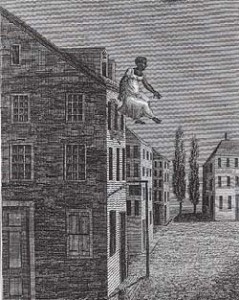
(c) From the general concept of death and hereafter in African culture, and from the incidence and relative tolerance towards self-killing among slaves, one might already deduce that suicide could be a theme in the early blues, or that, at least, there would be no cultural obstacle to tackle the theme in its songs.
If we accept that the blues’ origins go back to the last decade of the nineteenth century, the social and economic changes taking place in that era suggest a third reason for making suicide a candidate theme in blues lyrics. The “Gilded Age”, roughly spanning from 1877 till the first World War, marked an era of fundamental change in the social and economic tissue of the United States. The birth of modern America went hand in hand with profound changes in the economic infrastructure, reshaping itself definitely from an agricultural to an industrial society. Simultaneously, and not by coincidence, industrialization and urbanization saw an increasing concentration of wealth and power. The few rich wore diamonds, while the many poor wore rags. To illustrate the vastness of changes, just look at the employment rates of women: from 1880 to 1900 the number of employed women went from 2.6 to 8.6 million. They filled the crowded cities that were struck with significant rates of violence. In 1873, an economic depression hit hard, caused by bad loans and overspeculation in railroads and manufacturing . Poor whites and blacks were the victims on the front-line. This “Panic of 1873” led to the worst depression the United States had yet witnessed, reaching its nadir in 1877. The same year, the first nation-wide labor action in the United States and the most violent one, reduced some cities to battlegrounds as the U.S. Army moved in to restore order. Meanwhile, large enterprises placed the burden of the economic decline on the shoulders of workers who were either laid-off or saw their wages slashed. (M.A. Bellesiles, 2010). On the economic level, the worst crisis at national level was yet to come sixteen years later. “The Depression of 1893 can be seen as a watershed event in American history”. It was accompanied with violent strikes, the creation of a new political equilibrium, the continuing transformation of the country’s economy, and far-reaching social and intellectual developments. Some scholars estimate the total unemployment rate in 1894 at more than 18%. (David O. Whitten, 2010). The crisis went on for a couple of years.
On top of this, for the African-American populace, the year 1877 is also traditionally marked as the end of the Reconstruction era, returning the control of the government in the South to the white southerners. Disenfranchisement of African-Americans followed promptly, reflecting on the political level their deprivations on the social and economic level.
Against this backdrop of severe contractions, of which I named just a few, accompanying the birth of modern America, one might expect that suicide was not an unexceptional phenomenon. Indeed, a leading academic theory (Durkheim) has it that the number of suicides increases during times of industrial and financial crises. The reason is not poverty in itself, as the increased incidence can also be correlated with crises of prosperity and economic growth. Both are “crises”, i.e., disturbances of the existing structures. Every disturbance of an equilibrium, according to this theory, even if it involves greater comfort and wealth, provides an increased pressure among the population towards voluntary death. The explanation for this lies in the observation that in times of crises (positive or negative) the larger society becomes incapable of offering a stable answer for the needs and desires of its members. Values and needs change, and people do not longer have a hold on them as standards which can regulate their lives. They are, as it where, drifting on an open sea, not precisely knowing where the harbor might be located. This state is called “anomie”: a situation of alienation and purposelessness.
(d) The reasoning could be extended to the individual level of the early blues performer. According to the same academic theory, the archetypical early blues artist would be particularly prone to self-inflicted death because of his supposedly “individualistic” orientation. The decision to pursue a career playing the ‘devil’s music’ as a substitute for remaining a share-cropper or tenant was more than a mere artistic one; it placed the musician out of the regular social order. The lowered integration in society, in this argument, increases, the probability of encountering higher suicide rates. The French sociologist, Durkheim, who developed this still widely popular theory, labeled this the ‘egoistic’ suicide type, characteristic for persons with a deep meditation and self-examination, and experiencing a deterioration of social and familial bonds. Commonly, the blues was also regarded as an antagonist of the religious belief. The loosening of religious beliefs, still according to Durkheim’s concepts, adds a supplementary risk: it is often observed that secular trends in society are accompanied with an increased suicide rate.
Despite the above observations that would make suicide a plausible theme in the early blues, it is far from scoring high as a popular subject in the blues lyrics.
Edward Komara does not reserve a separate entry for it in the index of his “Encyclopedia of the Blues” (2005). In “American Popular Music: Blues ” (2006) Dick Weissman does quote some references in his discussion on recurrent blues themes, but suicide is anyhow thematically less prominent than the subject of death in general. Death is dealt with in several songs of Ida Cox’s repertory, and it is a theme in “Death Sting me Blues” by Sara Martin, a song that testifies of her talent that could easily rival with Bessie Smith’s and Ma Rainey’s. Other blues songs about death are probably better known: “Fixin’ to die” (Bukka White), “Six White Horses / See that my grave is kept clean” (Blind Lemon Jefferson), and “Death Letter Blues” (Son House, Lead Belly).
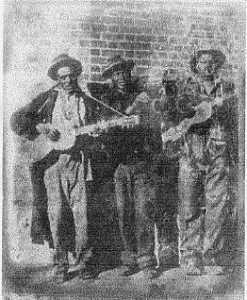
Though not really a blues song, but rather a late reminiscence of the minstrel tradition, the first of a number of songs carrying the title “Suicide Blues” is probably Arthur Collin’s version, recorded in 1919. It presents us an unhappy man who contemplated on a few horrible ways of killing himself. A song carrying the same title was later recorded by singer and pianist Maggie Jones, aka Fae Barnes, in 1925, and in the 1930’s by Leroy Carr, who left little to the imagination of the listener:
“If somebody finds me : when I’m dead and gone
Say I did self‑murder : I died with my boots onTook me a Smith and Wesson : and blew out my brains
I didn’t take no poison : I couldn’t stand the strainNo I ain’t no coward : and I’ll tell you why
I was just tired of living : but wasn’t afraid to dieTake me to the graveyard : put me in the ground
Please write on my tombstone : my woman threw me downIn my farewell letter : someone’s sure to find
Goodbye old cruel world : I’m glad I left you behind”
Like Peg Leg Howell in his “Rock and Gravel Blues”, Langston Hughes – a tremendously talented African-American writer whose work cannot be disconnected from the blues idiom – mentions the river as a chosen place for drowning oneself in a number of his blues poems, such as “Suicide”, “A Ruined Gal”, and “Life is fine”. In “Too Blue”, Hughes refers to a gun to commit suicide. In “Wartime Blues” (1926), Blind Lemon Jefferson tells us about a woman who is asked what she would do when her husband needs to go off to the war. She would “drink muddy water, go sleep in a hollow log”, and continues with a threat to suicide finding solace also in the river: “I’m going to jump overboard and drown”. Finally, Scrapper Blackwell trusts us in 1928 that if “troubles keeps on worrying [him, he] ‘d just soon have [his] body () buried in the sea.”
All in all, self-inflicted death is thus, contrary to what we might expect, at a first view, not a topic that attracted much attention in the lyrics of the early blues. Though I have no guarantee that my preceding, succinct overview of blues “suicide songs” is complete, I can safely argue that the blues performer did not seem to have an incentive to include the subject in his repertory to appeal to his (her) public. Certainly, it is hard to judge whether record companies banned the theme – or to which degree the blues artist applied some self-censorship before entering the studio. It is known that for instance “lynching” was avoided in songs because the topic was politically too hot (a notable exception is of course Billie Holiday’s “Strange Fruit”), but I have not found any indications in the literature regarding a similar avoidance policy on self-directed aggression.
Why then are there so few (early) blues songs dealing with suicide? Was it also a subject too hot to handle, or was there simply no particular reason to sing about it? Keeping in mind that the blues vocabulary and idioms are also rather tacit about it, we need to look for a number of circumstances that can make this relative absence comprehensible. I see a few of them:
(1) though death is not considered the end in the African’ concept of life, the way in which the transition to death is made, does matter;
(2) there is a reasonable doubt whether frequent suicide was part of the African-American tradition during slavery;
(3) available data show that suicide rates among the post war African-American population were very low;
(4) the blues genre and style bear no relation to any suicidal behavior, on the contrary.
Let me elaborate briefly on them.
(1) Studies have shown that the attitudes towards suicide are not homogeneous in African culture and can differ substantially from one tribe to another. Even if some documents indicate that particular ethnic groups of slaves had the reputation of being particularly prone to suicide, other scholars such as Bohannan (1960) have documented that in some of the African populations, suicide was considerably stigmatized. Self-destruction was believed to produce a state of ritual uncleanliness and danger, which even had to be purged by burning the house in which the suicide was committed, or the tree that was used for the hanging. Suicide was supposed to release evil supernatural forces as a consequence of which, in some tribes, it was culturally strongly condemned.
Considering that death in African culture is one of the last transitional stages of life, the passage rites are essential to make as smooth a transition to the next life as possible. The disregard of the correct funeral rites may cause the deceased to come back to trouble the living relatives. The reaction of planters in the British colonies to slave suicide most often made the observing of the appropriate rites difficult, if not impossible. Indeed, some planters decapitated the body or left the corpses to rot, hanging on the tree “until the flesh fell from the bones, or was torn off by the birds” (Charles Ball). They denied the usual burying rites to slaves who had taken their own life so as to set an example to deter others. After all, suicide was an economic loss.
(2) Slave suicide has been researched so far mainly in the perspective of the state of bondage, and not in relation to more classical notions as personal imbalance or mental disorder. As a result, its approach, then and even nowadays, has hardly been free of ideological considerations concerning the institution of slavery. The risk is thus not excluded that the extant documentation is skewed by the (political and ethical) discussion between abolitionists and the advocates of serfdom. The former could put the spots on suicide to support their argument that bondage was a savage economic and social system that factually conducted to the self-destruction of its subjects. To the latter, however, each case was not only like an insult to the planter – especially in the paternalistic Upper South regime -, it was also seen as a dangerous example that could possibly be followed by other slaves. Such a fear is not without ground, as one suicide case can indeed lower the threshold and decrease the fear for passing to the act for others. Advocates of slavery had a keen interest in minimizing the frequency of suicidal acts because it played into the hands of those who interpreted the self-inflicted death of slaves as a clear sign of the dispute of an inhumane system. If it was not a deliberate and conscious protest in the mind of the slave, it was at least a desperate act of escape from a situation, or from an expected future state, created by the sole conditions of slavery. In short: the little statistical material that can be gathered from contemporary sources, is possibly distorted by ethical and political thoughts.
Scholars disagree whether slave suicide can indeed be viewed as an act of protest or a way out of the slavery. It is not clear, and probably will never be clear, to which extent this moral/political consideration played a role in the decision of a slave to end his/her life when he/she was threatened with separation or could no longer stand the constant brutality. The lack of unambiguous data and statistics explains also the divided views on the frequency of suicide as a response to the suffering that slaves were forced to experience. I cannot take a stance in this discussion. In a recent study, Linda Kay Kneeland (2006) has however argued convincingly that while slaves did choose suicide, the rates appear to be surprisingly low. She supports earlier statements by authors as Genevose (1972) who are straightforward in their contentions. “The assertion that slaves frequently committed suicide, quaintly put forward by some historians as a form of “day-to-day resistance to slavery”, rests on no discernible evidence.” The slaves tended, for the most part, to cling to life tenaciously and looked for other escapes and responses to their imposed misery; they proved their creative power in their ability to find everyday humanity in as system “that treated them as less then human” (Rodriguez).
Genevose adds: “The low incidence of suicide among the slaves set a pattern that carried well into the twentieth century” (p. 639). This brings me to the third argument.
(3) If ever slave suicide was interpreted in the antebellum period as an ultimate declaration of protest and despair, the circumstances seemed to have changed since the Civil War. Silkenat observes a possible evolution in the attitude of, for instance, black North Carolinians who claimed, after the war, that suicide only affected whites, and that the abstinence from suicide within the African-American population was an univocal demonstration of their social virtue. Emancipation, he says, stripped suicide from its (ideological) connotation of resistance.
In any case, American public health statistics of the twentieth century consistently show that among the African-Americans there is a significantly lower suicide rate than among the white population, the latter being almost twice as likely to commit suicide than the former. In 2003, for instance, the rate of suicide for African Americans (all ages) was 5.1 per 100.000, while the rate for Caucasians was around 11.5.
The statistical gap is thus very substantial, and many possible explications are put forth. After having survived slavery, was there still anything else left that African-Americans could not handle? Is the higher reticence to self-destructive behaviour among black Americans a sign of their strength and determination to self-preservation and dignity? The strong social bonds in the black community, in the home, and in the religious organisations can also account for the historically low suicide rates (Fernquist, Cai, 2000). Dr. A. Poussaint of the Harvard Medical School (2008) thinks that the low incidence “goes back to the days when blues music was invented as a way to sing about pain and distress“. Blacks just consider pain and distress as an integral part of life. African-Americans pride themselves on being strong after having survived 250 years of slavery and more than a century of segregation and discrimination. Suicide is a sign of weakness.
Moreover, suicide is heavily stigmatized in American society. It is a disturbing subject that is not discussed publicly, as it is accompanied with feelings of shame, sadness, and guilt. Despite a greater visibility nowadays, and an increase in the number of black suicides – the gap between black and white suicide is narrowing spectacularly in recent decades – the topic of suicide is still considered “taboo”. This is true nationwide among all groups, but it is safe to say that the stigma is even stronger in the black community. Only recently, signs can be noticed that it can become a debatable issue in the public health sector.
(4) The quote above from Dr Poussaint who links low suicide rate to the blues, brings us automatically to a final element that sheds a light on the relative absence of suicide as a subject in the early blues.
It is axiomatic among blues aficionados that the blues music cures the blues and sadness. Suffice here to quote the words of Frederick Douglass when, already back in 1845, he talked about one of the musical roots of the blues, the slave song:
“Slaves sing most when they are most unhappy. The songs of the slave represent the sorrows of his heart; and he is relieved by them, only as an aching heart is relieved by its tears. At least, such is my experience. I have often sung to drown my sorrow, but seldom to express my happiness.”
Yet, scholars do not consider it as an axiom or established principle, but rather as a supposition that needs scientific testing.
Some interesting studies have been delivered that explore the relation between the preference for a particular musical genre, on the one hand, and the suicide risk / personality and psychological wellbeing, on the other hand (Nicola Sigg, 2009). Some 20 years ago, Stack and Gundlach (1992) (Wayne State and Auburn University) published an article which had them win the 2004 Ig Nobel Prize in the category “Medicine”, for their paper “The effect of country music on suicide” (as a reminder: the Ig Nobel Prize is awarded in honor of achievements that first make people laugh, and then make them think). The authors found statistical grounds for their thesis that, among the white population, there is a positive correlation between country music and suicide: areas where country music was most popular, as measured by the airtime devoted by local radio stations, showed also the highest suicide rate, even when other circumstances as divorce rates, poverty or the availability of guns were neutralized.
Their study has been much debated since, and no definitive outcome has been established (E. Maguire, Snipes, 1994; Sigg, 2009). In 2000, Prof. Stack tried to replicate the study for the blues fans, based on a national sample of some 1000 adults from the General Social Survey of 1993. He noted that research has neglected so far the possible impact of the blues music subculture on what he calls “suicide acceptability.” In his point of view, sad themes in the blues may attract suicidal persons and reinforce their suicidal moods and attitudes. Need it surprise us that he found that blues music does not have a direct positive effect on the acceptability of suicide. No significant difference in suicide acceptability was found between blues fans and non blues fans.
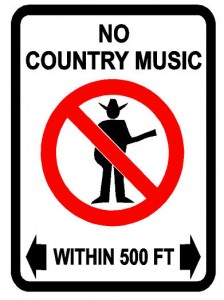
Music preference and personality are likewise the subject of recent scientific interest. The results are however not always in line with common expectations, nor coherent amongst them. Just a few findings as illustration. “Openness” as a personal trait has been related to music preference for Heavy Metal, Punk, Rock, Jazz, Classical, Blues, Rap, Reggae, Hip-Hop and Dance, which have all been shown to correlate highly with this trait. Other research has found that a preference for Jazz, Classical, Hip-Hop, Rap, R&B, Pop and Dance scored high on the “agreeableness” trait. Still other studies linked a low score on emotional stability with a preference for Jazz and Classical music. Individuals with a preference for Classical, Jazz, Blues, or Folk music were found to perceive themselves as intelligent, politically liberal with verbal abilities, but at the same time as low scoring on social dominance orientation or athleticism.
Recently, (BBC News, 2008) Prof. Adrian North of the Heriot-Watt University revealed some results from a study of some 36.000 individuals from around the world. It was the first time that the link between music taste and personality was studied on such a large scale. So far, it has delivered some interesting findings such as the similarity between fans of classical music and heavy metal, who are both defined as creative and “at ease”, but not as sociable and responsive to others.
What interests us most here are, of course, the supposed personality traits of the blues fan. Well, we seem to have a high degree of self-esteem, we are creative, outgoing, gentle and at ease. We knew this already, didn’t we? Anyhow, I’m looking forward to see the follow up results of the study. For the moment, however, Professor North told me, no additional follow up is available.
At this point, I hope that I have succeeded in explaining why our favorite blues music is almost tacit about suicide. In any case, I am about to close my PC to enjoy some good old, low-down delta blues from my favourite Son House. Somehow, his music always leaves me with a tremendously good feeling. If this article brought you in a morbid mood, I invite you likewise to dig up some old scratchy, earthy blues to lift your spirit. Enjoy it.
_______________________________
Sources
_______________________________
– Allan Anderson, www.deathreference.com/A-Bi/African-Religions.html
– M.A. Bellesiles, //hnn.us/articles/126790.html
– D. O. Whitten, http://eh.net/encyclopedia/article/whitten.panic.1893
– www.archive.org/details/Arthur_Collins-Suicide_Blues
– A. Poussaint: www.healthyplace.com/depression/minorities/suicide-among-blacks/menu-id-68/
– Adrian North: BBC – interview, 2008
– Alvin Poussaint; Amy Alexander: Suicide in Black and White: Theories and Statistics, 2006
– American Assoc. Suicidology: African American Suicide Fact Sheet, 2008
– Brycchan Carey, Peter J. Kitson : Slavery and the culture of abolition, 2007
– David Lester: Suicide and Culture, 2007
– David Silkenat: Moments of despair: suicide, divorce & debt in Civil War era North Carolina, 2011
– Dick Weissman: Blues, American Popular Music, 2006
– Edward R. Maguire; Jeffrey B. Snipes: Reassessing the link between country music and suicide, 1994
– Jennifer Copley: Country Music Suicide Studies, 2011
– Jonah Lehrer: Country Music and suicide, 2007
– Junius P. Rodriguez : Encyclopedia of slave resistance and rebellion, vol. 2, 2007
– Linda Kay Kneeland: African American suffering and suicide under slavery, 2006
– Mary Hill-Wagner: African American Males and Suicide: Changing attitudes require a new look, 2010
– National Humanities Center Resource: The making of African American Identity, vol I: Suicide among Slaves: a ‘very last resort’, 2007
– Nicola Sigg: An investigation into the relationship between music preference, personality and psychological wellbeing, 2009
– Offiong Offiong Asuquo: A rationalization of an African concept of life, dealth and the hereafter, 2011
– Paul Bohannan, et.al.: Homicide, Suicide and Mental Illness in Africa, 1960
– Robert M. Fernquist; Jinwen Cai: African-American and White Suicide in Kansas City, Missouri 1995-1997: Individual and Aggregate Circumstances, 2000
– Saskia Houttuin: Suicide in Africa not as low as previously thought, 2011
– Steven Carl Tracy, Langston Hughes and the blues, 2001
– Steven Stack: Blues fans and suicide Acceptability, 2000
– Steven Stack; Jim Gundlanch: The Effect of Country Music on Suicide, 1992
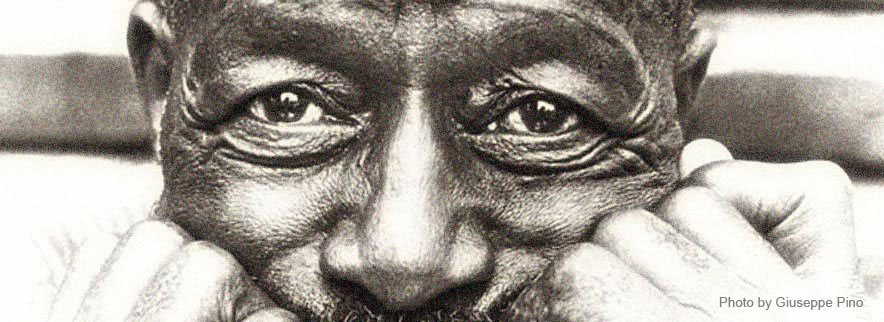

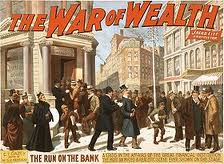
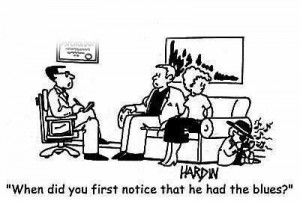

Blood Thirsty by Victoria Spivey
Terrible Murder by Bertha Henderson
then….
http://www.youtube.com/watch?v=dasoLVINGTc
It’s all about setting the mood.
“I wanna die, I wanna die, I wanna die die die till I die…” – Laura Smith ‘ ‘I Wanna Kill Myself’
http://www.youtube.com/watch?v=wSaztegVfDg
“Now I’d run in front of an automobile,
But I might get hurt by one of them wheels,
So I’ll just slip down on a banana peel,
I’m gonna kill myself.”
Don’t forget lyrics such as these though:
“I’m going to lay my head : down on some railroad track
Boy when that train come along : I’m going to snatch it back” – Buddy Boy Hawkins
and
“White man take the blues, he walk to the river and sit down,
If the blues get too heavy, he’ll jump overboard and drown.
Coloured man take the blues, he walk to the river and sit down,
Gets turned by a Nehi mama, and he turn right sure around” – Frank Stokes
There’s a certain fatalistic black humour to a lot of this, very different from the kinds of feelings that generate the real thing in a person, I’m not sure you can really compare the two, other than to concede that the subject is treated pretty openly in blues. I don’t know what the sociological motivations are for Wynonie Harris to shout at his sax player “Blooooow your brains out!”
his is a cheery topic.
One of my faves; Skip James, Drunkin’ spree.
“Love miss Willie now, yes I do,
Love her till the seas go dry.
If I thought she didn’t love me,
I’d take morphene & die.”
PV
Very interesting article on this subject, thanks. Some more songs that has some references to this:
Leadbelly – Goodnight Irene
Robert Pete Williams – Prisoner’s Talking Blues
Sarah Martin – Forget Me Not Blues
Peetie Wheatstraw – Suicide Blues
Little Oscar Stricklin – Suicide Blues
Peanut The Kidnapper – Suicide Blues
Lightnin’ Hopkins – Suicide Blues
Georgia Tom – Suicide Blues
Champion Jack Dupree – Suicide Blues
Curtis Jones – Suicide Blues
Sam Collins – Lonesome Road Blues
Buddy Moss – Insane Blues
Percy Mayfield – The River’s Invitation
On the subject of suicide in the blues, I am surprised that you don’t mention Robert Pete Williiams.
There is also that famous line in Trouble in Mind
“I’m gonna lay my head,
On some lonesome railroad line,
and let the 2:19 train,
Ease my troubled mind.